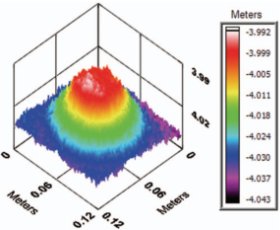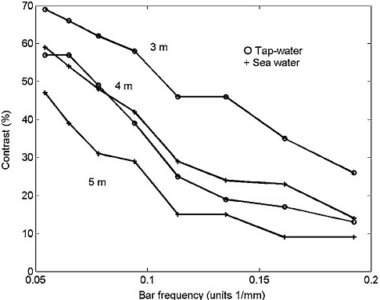Underwater 3D gated viewing Laser radar
J. Busck from the Technical University of Denmark assembled an underwater 3D gated viewing Laser radar using the 4 Picos ultra high speed ICCD camera.


3D underwater Laser radar on gated viewing principle
For the first time, underwater 3D images are taken using a gated viewing Laser radar. The final images are computed by a algorithm, which applies the method of weighted averages on a sequence of 2D images. J. Busck shows that 3D gated viewing images can be recorded at any contrast level between 0 and 100%. Furthermore, he presents a novel and dynamic way of measuring the depth of gating and a novel correction for underwater gated viewing 3D imaging.
Experimental setup of the 3D gated viewing Laser radar
The principle of range gated imaging is to keep the high speed ICCD camera closed and wait until the reflected photons from the target return to the camera. Therefore, a Laser emits an light pulse and triggers the attached camera. After the camera is triggered a predefined delay time is running till the gate of the camera opens. The delay time determines when the camera gate opens for recording of the returning laser light. The 3 dimensional image is created by taking a series of these images with increasing delay time. Then the target surface is determined for each pixel position by a computer algorithm of weighted averages.
Underwater optical versus gated viewing imaging
The 3D imaging technique based on the gated viewing principle can overcome the contrast limitation of optical imaging which is present underwater. This technique can be applied in very low and zero optical contrast conditions. A set of bar targets was placed underwater to determine the contrast. The bar targets are placed in the water and imaged with camera gate time 0.5ns. The figure below shows the contrast measured at 3m and 4m in tap water, and 4m and 5m in sea water. It can be seen that the contrast of the widest bar decreases by 12 to 13% per meter. Therefore, the contrast of a optical 2D image become zero at 10m range underwater.

Enhance image contrast with the 3D Laser radar system
In contrast to the 2D optical imaging the 3D Laser radar system well preserved the camouflaged target though it has very low optical contrast to the background. The noise in the 3D images arises from noise in the depth of gating profiles. This is explained by a decrease in signal-to-noise ratio with increasing range. Water turbidity causes as well a decrease in signal to noise ratio and leading to a deterioration of the range accuracy of the 3D image.


3D gated viewing imaging works beyond the limit of conventional 2D imaging
The 3D images reveal the important fact that the applied method of gated viewing performs well beyond the limit where conventional 2D imaging breaks down. This is explained by the difference in recording techniques, where conventional imaging only uses the amplitude of the reflected intensity, while gated viewing can combine intensity and the speed of light to created the 3D image. The potential for high accuracy 3D range gated imaging in air has been proposed by J. Busck and H. Heiselberg.
High resolution images even at zero optical contrast
The presented high resolution and novel underwater 3D gated viewing images of a camouflaged target show the power of the 3D range gated measurement technique. This experiment shows that the optical resolutions of underwater 2D images decrease with
increasing range. However, the optical contrast reduction is not a limiting factor for 3D range gated imaging. It is concluded that underwater 3D gated viewing laser radar imaging provides high depth resolution and showed its power at almost zero
optical contrast.
Title:
Underwater 3D optical imaging with a gated viewing laser radar
Author: J. Busck
Institute: Technical University of Denmark,
Lyngby, Denmark
